Michigan, located in the Great Lakes region of the United States, boasts a dynamic and varied climate in Michigan USA. Bordered by four of the five Great Lakes—Michigan, Huron, Superior, and Erie—the state’s weather patterns are profoundly influenced by these vast bodies of water. This results in distinct seasons, from warm, humid summers perfect for lakeside activities to cold, snowy winters ideal for sports, alongside unique microclimates, particularly along the coastlines.
The Great Lakes act as a natural moderator, leading to more temperate conditions near the shores compared to inland areas. This is especially noticeable in winter, when coastal regions remain warmer, and in summer, when they are cooler. Consider Lansing in the central Lower Peninsula versus Muskegon on the western Lake Michigan shore. Despite similar latitudes, Lansing experiences more hot days and very cold nights annually than Muskegon. This moderating effect is even more pronounced in the Upper Peninsula along Lake Superior, known for its colder waters and significantly fewer hot days.
Historical Trends Shaping the Climate in Michigan USA
Observational data reveals significant shifts in the climate in Michigan USA. Temperatures across the state have risen by nearly 3°F since the early 20th century. The warmest periods on record have occurred in the 2000s, with 2012 standing out as the hottest year, averaging 4.6°F above the long-term mean.
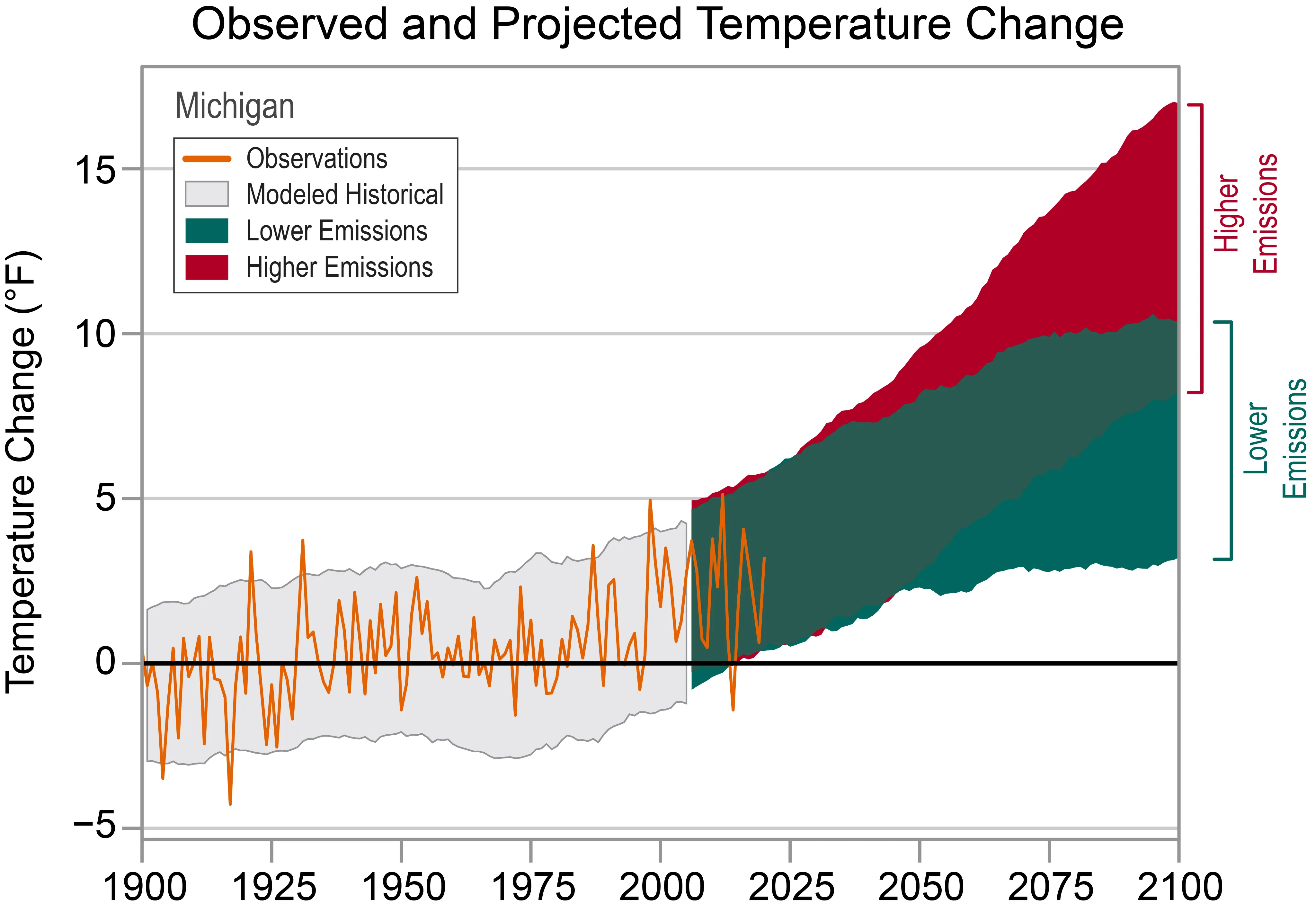 Observed and Projected Temperature Change
Observed and Projected Temperature Change
 Observed and Projected Temperature Change
Observed and Projected Temperature Change
Interestingly, this warming trend has been concentrated primarily in winter and spring, a characteristic observed across much of the Midwest. Summers have not seen substantial warming, reflected in a below-average number of hot days since 1990 and no clear trend in warm nights. The winter warming, however, has led to a decrease in very cold nights and, notably, reduced ice cover on the Great Lakes, impacting winter activities and coastal vulnerability.
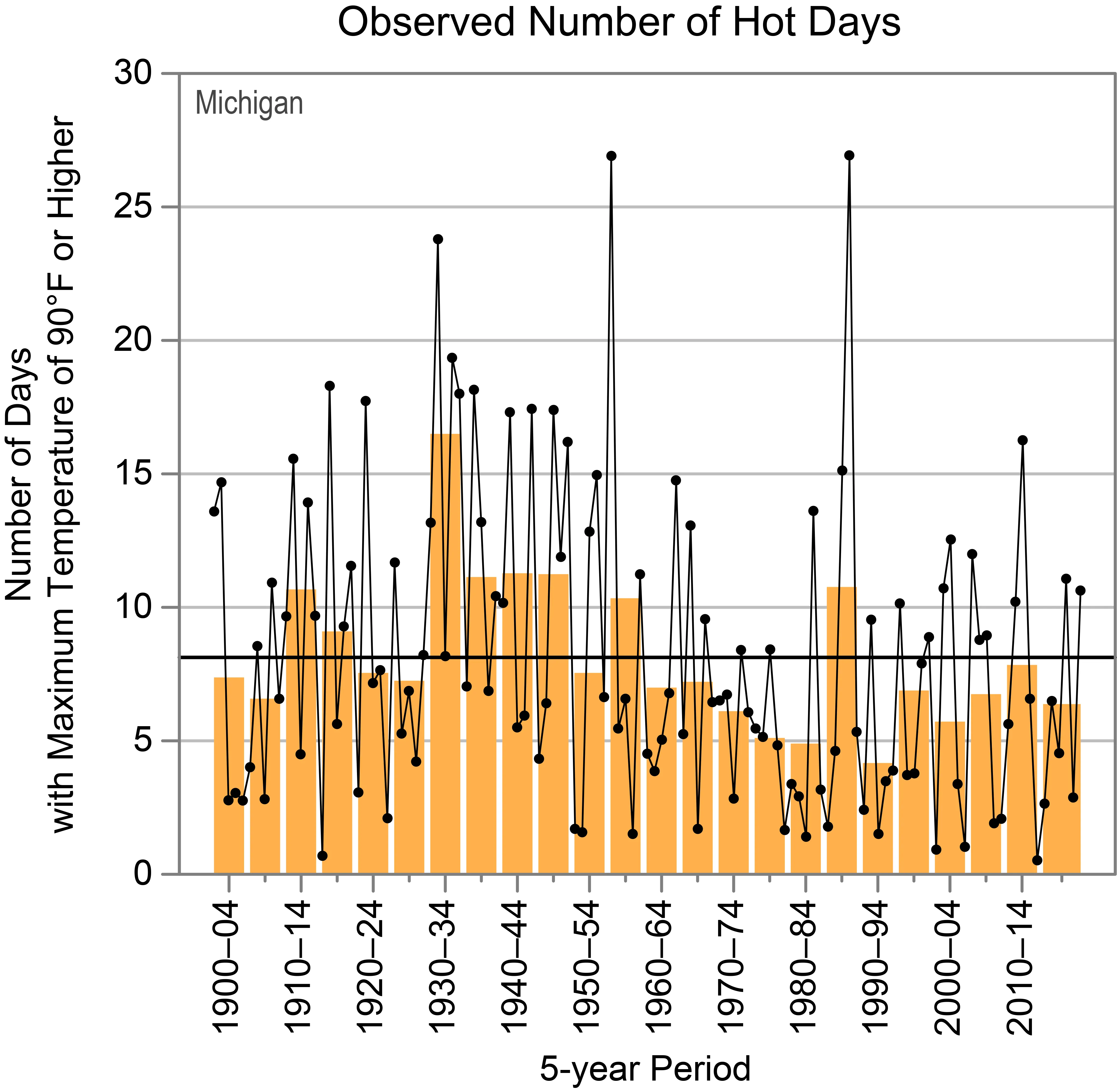 Observed Number of Hot Days
Observed Number of Hot Days
 Observed Number of Hot Days
Observed Number of Hot Days
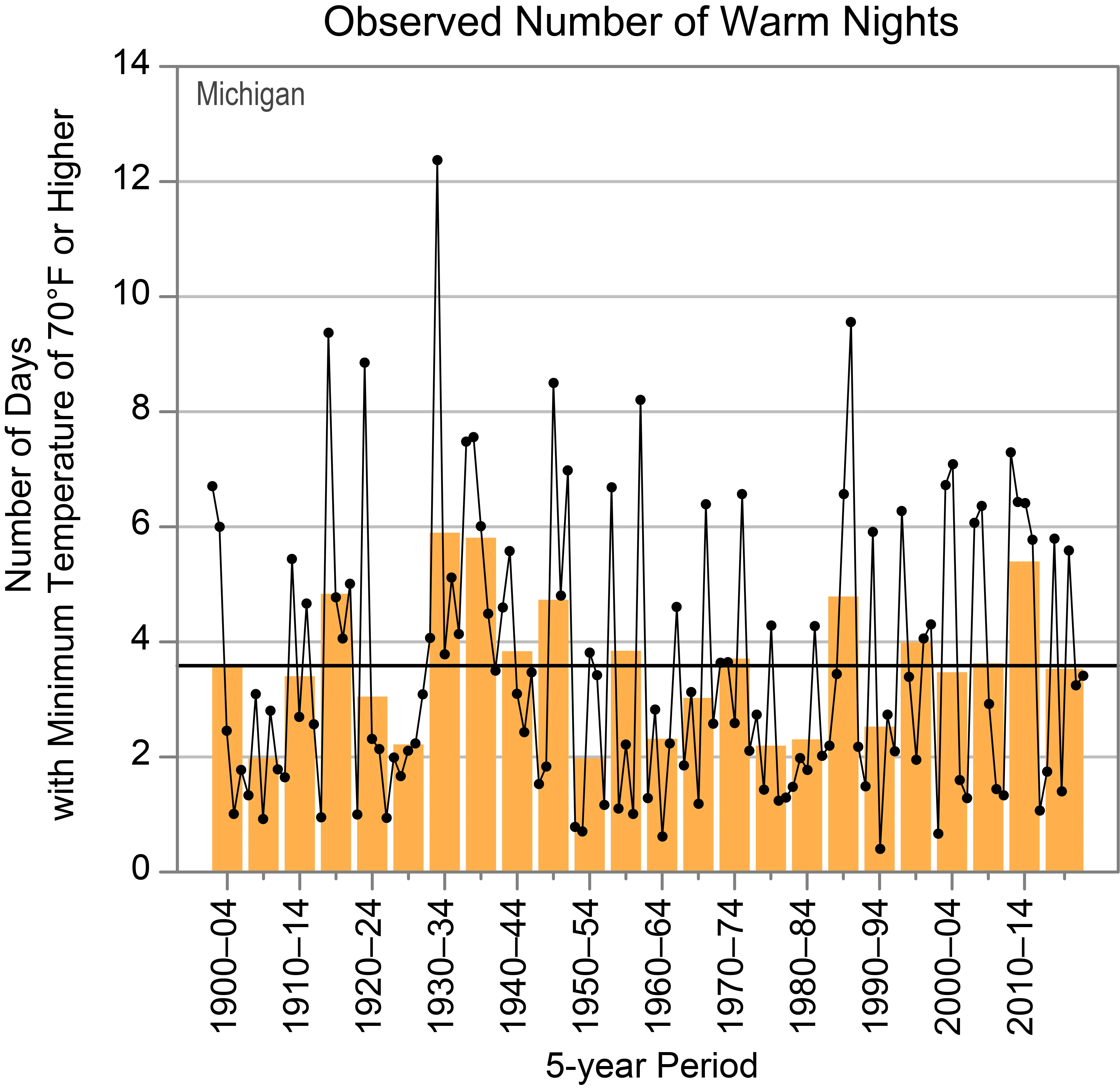 Observed Number of Warm Nights
Observed Number of Warm Nights
 Observed Number of Warm Nights
Observed Number of Warm Nights
 Observed Number of Very Cold Nights
Observed Number of Very Cold Nights
 Observed Number of Very Cold Nights
Observed Number of Very Cold Nights
Precipitation patterns also show variability. Annual statewide precipitation has ranged significantly throughout the historical record. While the 1930s saw particularly dry periods, the 2010s were among the wettest multiyear intervals. A notable upward trend in annual precipitation has been observed since 1995.
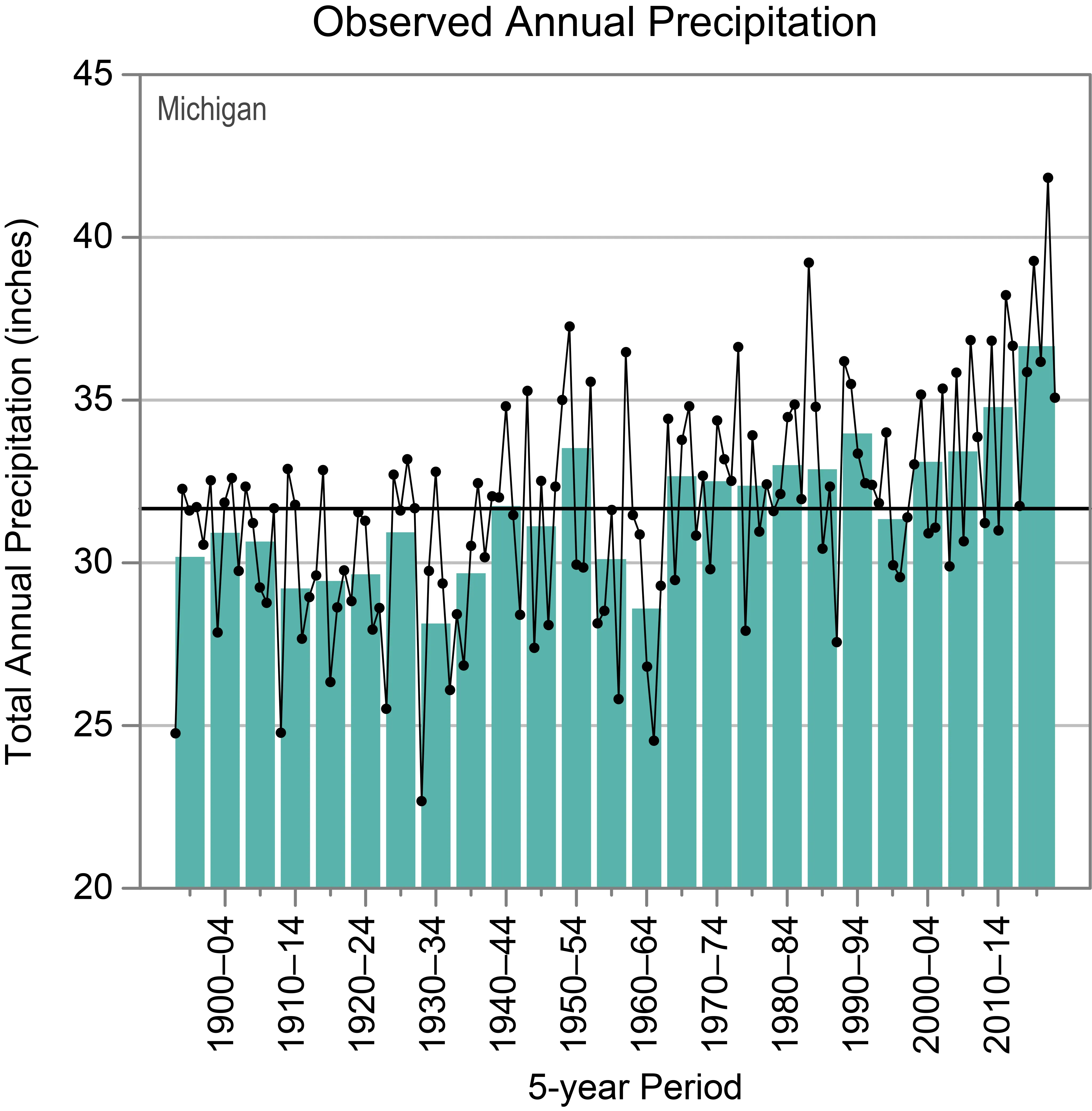 Observed Annual Precipitation
Observed Annual Precipitation
 Observed Annual Precipitation
Observed Annual Precipitation
Furthermore, the frequency of extreme precipitation events (days with 2 inches or more) has demonstrably increased, reaching record highs in the 2010s. This has implications for flooding and water management. Snowfall is a significant part of the Michigan climate, especially in areas prone to lake effect snow, with parts of the Upper Peninsula receiving over 180 inches annually.
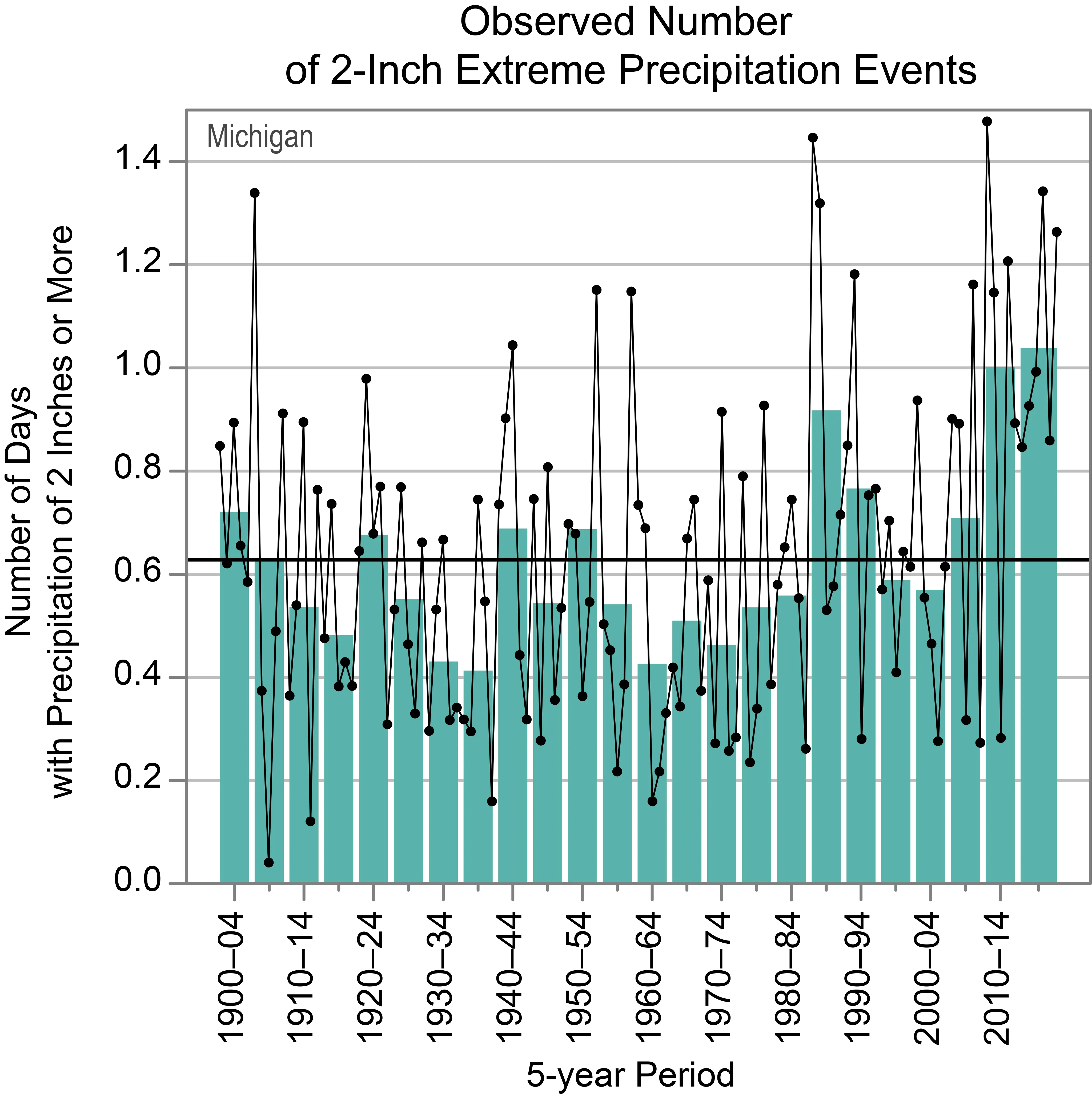 Observed Number of 2-Inch Extreme Precipitation Events
Observed Number of 2-Inch Extreme Precipitation Events
 Observed Number of 2-Inch Extreme Precipitation Events
Observed Number of 2-Inch Extreme Precipitation Events
Lake levels in Michigan-Huron have also experienced substantial fluctuations, ranging 3 to 6 feet since the late 19th century. Periods of high levels (1980s, late 2010s) and low levels (early 2000s) have been recorded, each presenting unique environmental and socioeconomic challenges, from coastal erosion to impacts on shipping and water supply. Levels rose rapidly from 2013, reaching near-record highs by 2020.
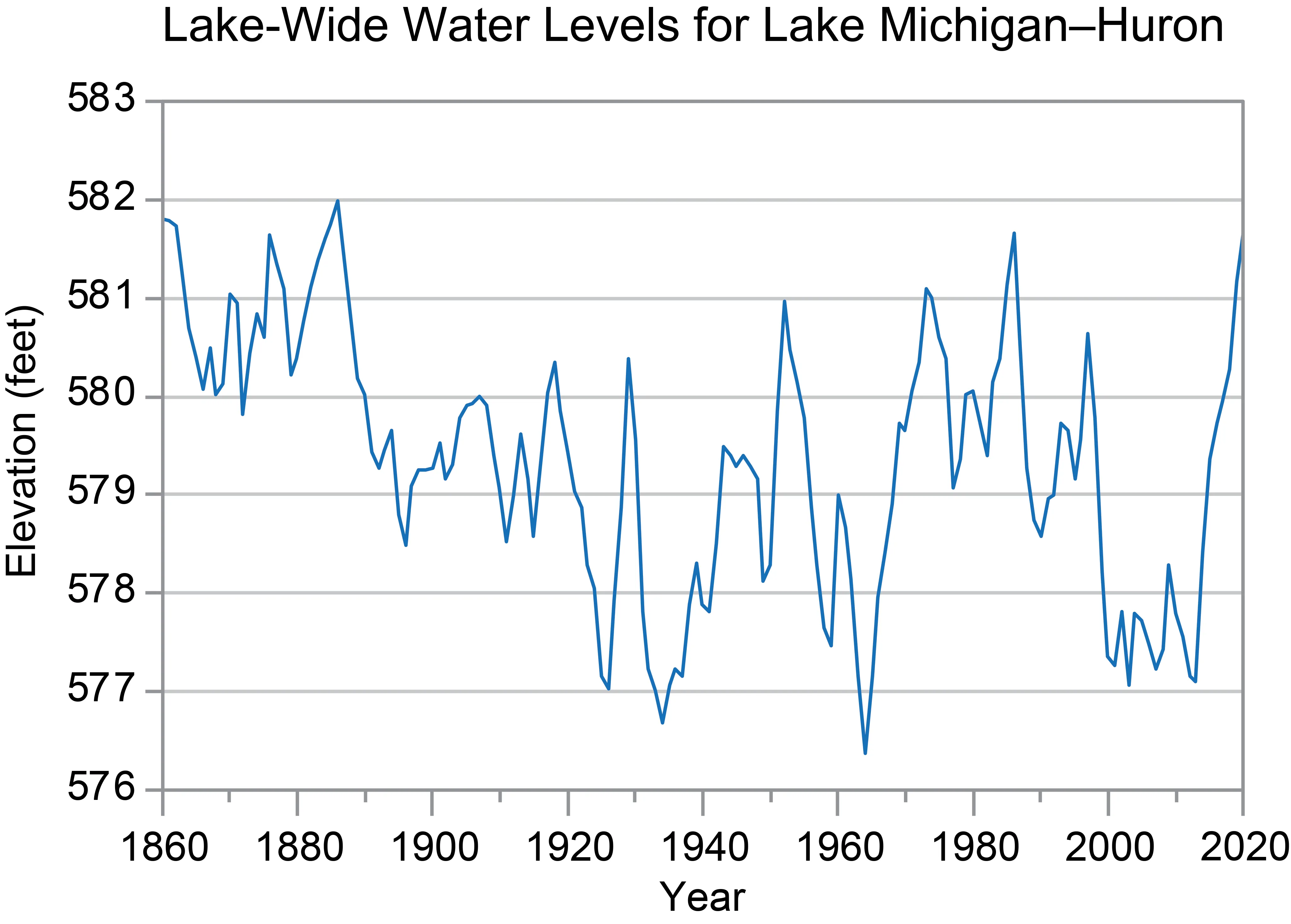 Lake-Wide Water Levels for Lake Michigan-Huron
Lake-Wide Water Levels for Lake Michigan-Huron
 Lake-Wide Water Levels for Lake Michigan-Huron
Lake-Wide Water Levels for Lake Michigan-Huron
Future Projections for the Climate in Michigan USA
Looking ahead, projections for the climate in Michigan USA indicate a continuation and acceleration of recent trends, particularly under higher greenhouse gas emissions scenarios. Historically unprecedented warming is projected for this century. Even under lower emissions, annual average temperatures are likely to surpass historical records by mid-century.
Extreme heat is a growing concern, particularly in urban centers like Detroit, where the urban heat island effect combined with humidity can lead to dangerous heat index values. Warmer springs are expected to lengthen the growing season, but they also increase the risk of damaging late spring freezes, as seen in the devastating agricultural losses following early blooming in March 2012.
Increases in precipitation are also projected, most likely concentrating in the winter and spring months. This aligns with projections for increased frequency and intensity of extreme precipitation events, raising the potential for more frequent and severe flooding. Springtime flooding, in particular, poses a threat to Michigan’s vital agricultural sector by potentially delaying planting and reducing yields.
Despite the projected increase in precipitation, the intensity of summer droughts is also expected to rise. Higher temperatures will increase evaporation rates and soil moisture loss, making natural dry periods more severe.
Future changes in Great Lakes water levels remain a subject of ongoing research, but they are highly sensitive to shifts in precipitation, evaporation, and ice cover. Reduced winter ice cover, a consequence of warmer temperatures, leaves coastlines more vulnerable to erosion and flooding from storms. Understanding these dynamics is crucial for planning and adaptation in the region. More technical details and data supporting these observations and projections are available in the [NOAA Technical Report] on the Michigan State Climate Summary.
Planning Your Trip Based on the Climate in Michigan USA
Experiencing the climate in Michigan USA is part of what makes visiting the state so unique. Each season offers distinct opportunities. Summer (June-August) is warm and humid, perfect for enjoying the Great Lakes shores, boating, swimming, and exploring state parks. Be prepared for potential heat waves and thunderstorms.
Fall (September-November) brings stunning fall foliage, cooler temperatures, and crisp air, ideal for hiking and scenic drives. Winter (December-February) is cold and snowy, especially in the Upper Peninsula and along the west coast, offering excellent conditions for skiing, snowboarding, snowmobiling, and ice fishing.
Spring (March-May) can be variable, transitioning from lingering cold and snow to milder temperatures and blooming landscapes. This is a great time for fishing, seeing waterfalls melt, and enjoying the state waking up. Be ready for unpredictable weather, including late freezes and potential spring flooding in some areas.
When visiting Michigan, packing layers is always a good idea, regardless of the season. Checking the local forecast is essential, especially if traveling during transitional periods or planning outdoor activities affected by specific weather conditions like heavy snow or potential storms. Understanding the typical climate in Michigan USA for your travel dates helps ensure a comfortable and enjoyable experience.
Frequently Asked Questions About the Climate in Michigan USA
- What is the best time to visit Michigan climate-wise?
The “best” time depends on your preferred activities. Summer is popular for lake activities (warmest), Fall for colors (mild, crisp), and Winter for snow sports (cold, snowy). Spring is variable but good for early outdoor activities. - Does Michigan get a lot of snow?
Yes, particularly in the Upper Peninsula and along the Lake Michigan coastline (west side of the Lower Peninsula) due to lake effect snow. Inland areas receive less but still experience significant snowfall during winter. - How do the Great Lakes affect Michigan’s weather?
The Great Lakes moderate temperatures, making coastal areas warmer in winter and cooler in summer compared to inland locations. They are also the primary source of lake effect snow. - Is the climate in Michigan USA changing?
Yes, data shows warming trends, particularly in winter and spring, an increase in extreme precipitation events, and fluctuating Great Lakes water levels. Future projections suggest these trends are likely to continue.
Conclusion
The climate in Michigan USA is a defining characteristic of the state, shaped dramatically by the presence of the Great Lakes. From the moderating influence on coastal temperatures to the intense lake effect snow, the climate dictates the rhythm of life and the array of available experiences throughout the year. As climate patterns continue to evolve, understanding these changes becomes increasingly important for residents and visitors alike, ensuring we can continue to appreciate and adapt to the unique environmental tapestry of Michigan.
